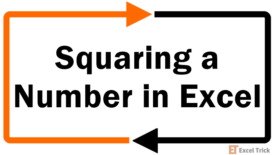Very simply put, the Name Box is a name-displaying tool. Selection of any cell, column, row, named range, chart, picture, etc., (any item on the worksheet window) shows its name in the Name Box.Displaying the name by selection of any cell or item is the prime job of the Name Box but note that it's just the prime job. The Name Box can be used as a … [Read more...]
Excel WORKDAY.INTL Function – How To Use
The WORKDAY.INTL function is categorized as a DATE/TIME function in Excel and is an extension of the WORKDAY function that offers more customizability. In addition to allowing you to calculate N working days into the future or past like the WORKDAY function, it also allows you to set custom weekends.The function has broad applicability in the … [Read more...]
Excel NETWORKDAYS.INTL Function – How To Use
The NETWORKDAYS.INTL function is a Date/Time function in Excel that helps calculate the difference between two given dates in terms of working days. The function, just like the NETWORKDAYS function, automatically omits weekends while computing the number of workdays. In fact, it can do everything that the NETWORKDAYS function does. Plus, it allows … [Read more...]
Excel Page Breaks – Guide to Add, View & Remove Page Breaks
If you feel your data is crowding the page it is to be printed on and dividing the data would help with clarity, you can insert page breaks on your sheet. Page breaks are more for the print aesthetic than anything else, as you wouldn’t want to unnecessarily see gray lines on the worksheet if it wasn’t going to be printed.Page breaks aren’t just … [Read more...]
How to Square a Number in Excel (5 Quick & Easy Ways)
The aim is simple. Squaring a number, a number raised to the power 2, the number multiplied by itself; it's all the same thing, you know the drill. If this is giving you unfond memories of your childhood math classes, it's a good thing you're here because we aren't going to math-splain you.This tutorial is about squaring a number in Excel, and we … [Read more...]
How to Lock Cells in Excel – Protecting Excel Worksheets
Whether you are trying to steer clear of accidental overwrites, feeling fickle, or trying to protect some important data; all your reasons are good enough to lock cells in Excel. Locking a cell means that the contents of the cell cannot be changed and the user will receive a prompt when trying to edit a locked cell, not allowing edits to the locked … [Read more...]
How to Remove Hyperlinks in Excel (3 Easy Ways + VBA)
Removing hyperlinks is no difficult feat and with a few simple clicks, you can restore your hyperlinks to simple text. There are a handful of different ways to do this which we will walk you through later in this tutorial.Hyperlinks can be created manually but Excel has a brain of its own when it comes to URLs and email addresses it automatically … [Read more...]
Excel NETWORKDAYS Function – How To Use
The NETWORKDAYS function is a Date/Time function in Excel that computes the number of days between two given dates. The function automatically omits weekends while computing the number of workdays. If you want to omit any non-weekend holidays, the NETWORKDAYS function can accommodate that, too.Financial analysts use the NETWORKDAYS function to … [Read more...]








